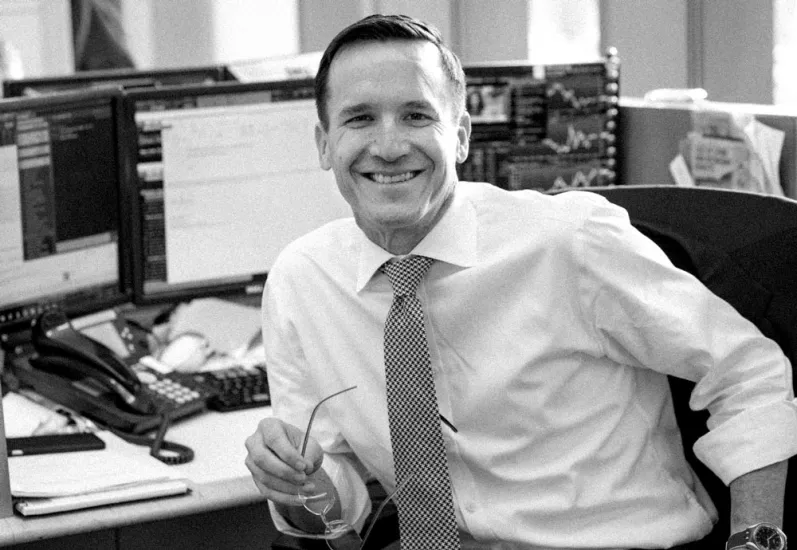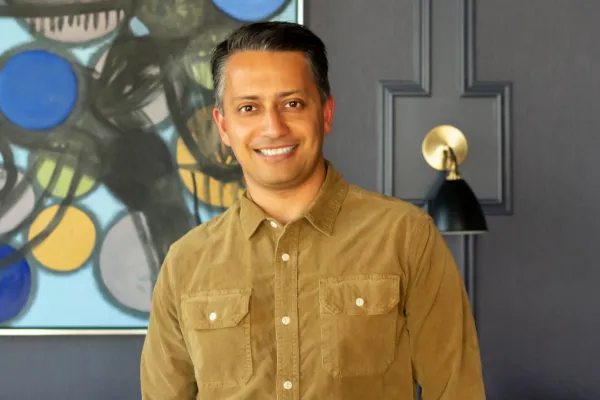Asset managers, under the pressures of rising costs, fee compression, the shift toward passive investing, and more, continue to consolidate to brighten their futures. Thornburg Investment Management has a different strategy that is attracting hundreds of millions of dollars in assets each month.
The Santa Fe, N.M.-based firm, with $41 billion in assets and 250 employees, is expanding organically and striking new Asian partnerships, primarily in China. It also is focusing on ESG-friendly investments and requiring members of its investment teams to become “generalists” who actively collaborate with peers instead of siloed. It has two small offices in London and Hong Kong.
Jason Brady became CEO in 2016, after having served at the firm as a portfolio and managing director for about a decade. He says that he "immediately faced some performance challenges and our international equity franchise was shrinking.” Brady described his mandate as “stabilizing the business, figuring out where we were, and ultimately, starting to grow it again.” He focused on “understanding what our strengths are and how we need to adapt the company to play to our strengths.”
[Like this article? Subscribe to RIA Intel’s' twice-weekly newsletter.]
Founded in 1982, Thornburg caters to institutional investors, financial intermediaries, RIAs, and banks. It offers mutual funds, institutional accounts, separate accounts for high-net-worth investors, and UCITS funds for non-U.S. investors. Known for its fixed income offerings and mutual funds, Thornburg saw $1.1 billion in outflows in March as markets tumbled. Since then, it has been averaging daily inflows of $15 million, mostly from institutional investors.
Brady says that assets often go to “mutual funds because of their convenience for our financial intermediary clients and their investors.” Also, Thornburg customizes investing for each client, which can include managed accounts or other structures.
Thornburg is “forging ground internationally with new partnerships and clients, particularly across Asia and Australia,” Brady told RIA Intel. It’s also focused on applying ESG (environmental social and governance) lens across all of its investment portfolios.
Brady emphasizes that Thornburg’s collaborative approach is a distinct and direct reaction to his days working at several Wall Street firms, including Fidelity Investments and Lehman Brothers. There “each investment team was siloed and often physically separated onto separate floors or in other buildings.”
He considers members of his investment teams “generalists" and positions them to interact with other partners, to avoid being siloed. “No matter the asset type, sector or geography, all 40 members of our team participate in conversations about markets,” Brady says.
Overseas investment remains a high priority. Thornburg has forged several partnerships in Asia and Australia. It co-launched a China Universal fund in November 2019 with a Chinese partner, China Universal Asset Management, and is developing other solutions with them in Taiwan and Hong Kong.
The company runs most of its Asian investments via Hong Kong-based Thornburg Investment Management (Asia) Limited, a wholly-owned subsidiary.
Overseas growth, Brady says, “happened organically. We already had knowledge in the region. Client appetite was also there.” The Chinese firms saw Thornburg as an expert in U.S. markets and Thornburg needed their expertise in Asia. And the Chinese firms are looking to do business in the U.S.; hence it’s a reciprocal agreement.
Brady downplays the potential pitfalls of working with a China-based firm, including political and cultural differences. After meeting several times with executives at China Universal Asset Management, “it became clear that from a values perspective, our values were congruent,” he said.
Restrictions that previously forbade American companies from being majority owners in China have been easing despite trade tensions. “There are broader investment options in China and there’s an opening there, and an ability for a wholly-owned investment equity in a Chinese company.”
Brady says Thornburg is looking to collaborate with China-based partners “who can build the distribution channel. The cost of that is enormous. So we’re looking for partners that have better access to these granular distribution efforts,” he explains.
Because Thornburg is privately held, well-funded, and has a strong balance sheet, it can employ a “long-term mindset,” Brady explains. He says that taking the long view has “led us to invest in fixed income global equities, and moving into areas like private markets, where clients will need our experience in value investments.”
Increasing customer interest in ESG spurred Thornburg to undertake a rigorous screening process in which all of potential investments are run through an ESG lens. When ESG standards were first developed, they were driven by faith-based investors that focused on excluding certain products like alcohol and tobacco stocks, he says.
Now it’s more about what’s being included such as maintaining safe water and environmentally sound investing. Therefore, ESG screening has become another critical element when evaluating stocks, he says.
On its website, Thornburg emphasizes that being based in Santa Fe, away from traditional financial hubs, enables it to “think outside of popular opinion and base our decisions on unconventional wisdom.”
Brady says, “My joke is I don’t have to take the 5:10 a.m. train from Ronkonkoma,” in Long Island to Penn Station in Manhattan. When working in the heart of a financial district such as New York “you get caught up in what everyone else is thinking.”
He says Santa Fe’s fresh air, mountains, and scenic views foster clear thinking and “how in periods of stress (market or otherwise), being based far outside of a financial center gives us perspective. This, combined with our private structure, lets us make the best decisions for the long term, both in our portfolios and for the business.”
Brady considers Thornburg a “mid-sized asset manager, with tons of white space for growth. But we have a great balance sheet and income statement, a different perspective and a growth mindset for investing at what we’re good at.”
Subscribe to RIA Intel’s twice-weekly newsletter and follow the publication on Twitter and LinkedIn.







